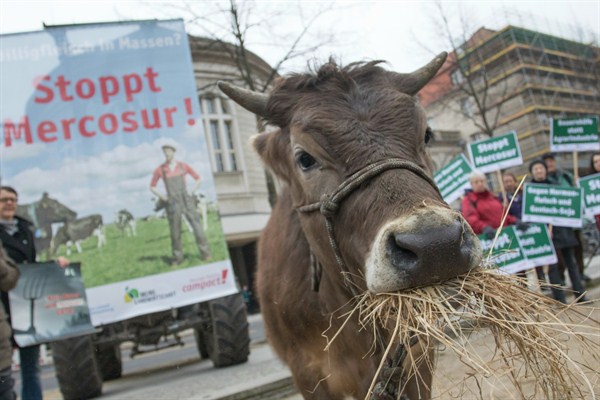Loading your audio article
After 20 years of on-and-off negotiations, leaders from the European Union and South America’s Mercosur trade bloc announced late last month that they had reached a sweeping trade agreement encompassing 800 million people and almost a quarter of the global economy. Hailed on both sides of the Atlantic as a “landmark,” the accord must still be ratified by the negotiating parties’ legislatures, and it faces stiff opposition in key European countries like France and Ireland as well as in the four Mercosur member states of Brazil, Argentina, Paraguay and Uruguay. In an email interview with WPR, Bruno Binetti, a Buenos Aires-based research fellow at the Inter-American Dialogue, discusses the many obstacles standing in the way of the deal’s successful implementation.
World Politics Review: Why did negotiations on this deal drag on for two decades? What were the main sticking points that held up a final deal?
Bruno Binetti: Although formal talks began in 1999, there was little political will on either side to reach an agreement until 2015. One of the thorniest issues was the European Union’s massive agricultural subsidies, which Mercosur criticizes as unfair competition. European countries also wanted to protect their geographical denominations for local traditional products like cheese and certain alcoholic beverages. Finally, negotiators differed on the length of time that Mercosur would have before tariffs on imports of European manufactured goods were eliminated. Companies in Mercosur countries wanted a longer transition period, but the EU wanted quicker access to Mercosur’s market for their products. It seems that the parties have reached compromises on all of these issues, at least in principle.

